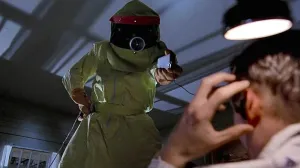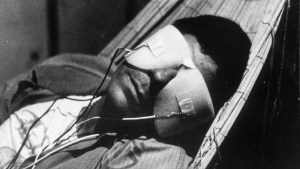If you love zombie movies, chances are you’ve seen Danny Boyle’s triumphant return to the genre, 28 Years Later (you can read our review here). The film, like its two predecessors, 28 Days Later and 28 Weeks Later, features zombies capable of running full speed at their victims rather than stumbling along like the undead corpses of old. Days in particular is often credited with inventing the idea of “fast zombies,” a trend further popularized by movies like Zack Snyder’s Dawn of the Dead and the underrated zombie classic [REC]. It’s a case of stolen valour, however, because running zombies actually were popularized in 1985’s Return of the Living Dead, which you can stream right now on Tubi and Pluto TV.
Videos by ComicBook.com
Return of the Living Dead tells the story of two Uneeda Medical Supply workers who accidentally unleash a zombie plague upon the city of Louisville, Kentucky. The cult horror comedy was the directorial debut of Alien writer Dan O’Bannon, based on a script by Night of the Living Dead co-writer John A. Russo. Influenced by both the punk subculture and the zombie movies that came before it, Return of the Living Dead is a seminal work of zombie fiction that also just so happens to feature some of the earliest zombies capable of running a 5K (though many argue 1980’s Nightmare City debuted the first running zombies).
28 Days Later Made Running Zombies Mainstream
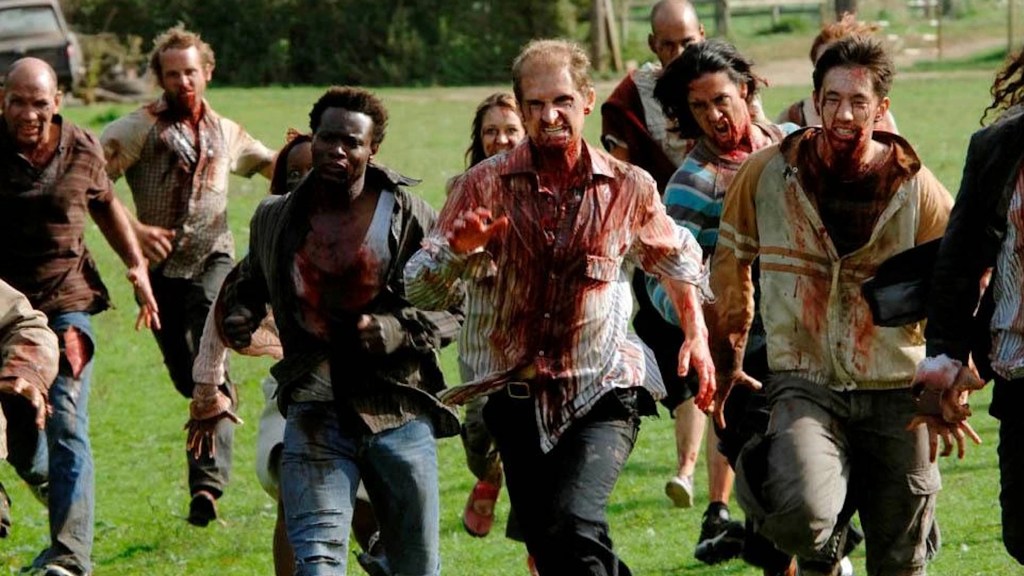
To be fair, 28 Days Later definitely introduced the idea of running zombies to the greater public consciousness. Before 2002, the idea of zombies as anything other than the shambling bags of rotten meat introduced in George Romero’s Night of the Living Dead was mostly unheard of. That’s because while Return of the Living Dead was and still is tremendously popular among gorehounds, it’s not exactly required viewing for most cinephiles.
It also doesn’t help that one particular aspect of Return of the Living Dead rearranged the fabric of pop culture forever, pretty much obscuring everything else about the movie. Even those who have seen the film don’t usually associate it with the birth of running zombies. That’s because for the last 40 years, the biggest takeaway from Return of the Living Dead has been “Braaaaains!”
What Do Zombies Eat?
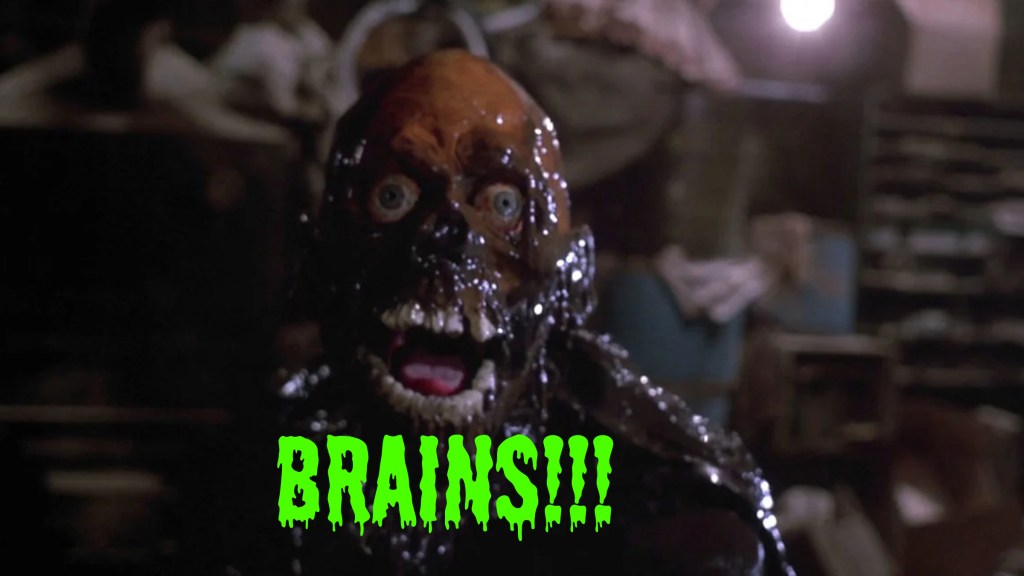
Ask anyone from six to 60 what zombies eat and nine times out of 10, the answer will be brains. Such is the legacy of Return of the Living Dead. It will forever be known as the film that gave us brain-eating ghouls and rewrote zombie lore for the masses. It doesn’t matter that zombies eating brains makes no sense — to quote World War Z author Max Brooks, “If the virus lives in the brain and the zombie eats its victims’ brains, how do you make more zombies?” Thanks to a single, low-budget horror film from the mid-’80s, zombies will forever be thought of as brain-eaters.
With that in mind, who wouldn’t forgive someone for forgetting, “Oh yeah, the zombies run in that movie, don’t they?”
Ironically, the brain-eating is directly related to the running it overshadows, at least from a production standpoint. Due to a whole slew of rights issues, Return of the Living Dead tried to differentiate itself from George Romero’s zombie movies in every way possible. For instance, Romero never gives a clear origin for his zombie apocalypse, leaving it up to the viewer to decide if it’s the result of a virus or some biblical plague sent by a pissed off God.
Meanwhile, Return of the Living Dead lets viewers know right from the jump that the dead are becoming reanimated thanks to Trioxin 2-4-5, a chemical used by the military to kill illegal marijuana crops. These Trioxin zombies differ from Romero’s classic zombies in many ways. Where Dawn of the Dead‘s zombies can be killed by destroying their brains, the only way to get rid of Return of the Living Dead‘s revenants is to burn them until there’s nothing left but ashes. Where classic zombies are mindless and speak in nothing but grunts and moans, Trioxin zombies retain limited thought and speech capabilities, making them extra dangerous.
And lastly, of course, Romero’s living dead move like molasses and crave human flesh regardless of what part of the body it’s attached to, while Return of the Living Dead‘s zombies will run you down for a chance to munch on your grey matter. While the Trioxin zombies’ ability to sprint may not be their most prominent feature, it’s an important one nonetheless.
Slow Zombies Represent Our Inevitable Crawl Towards the Grave
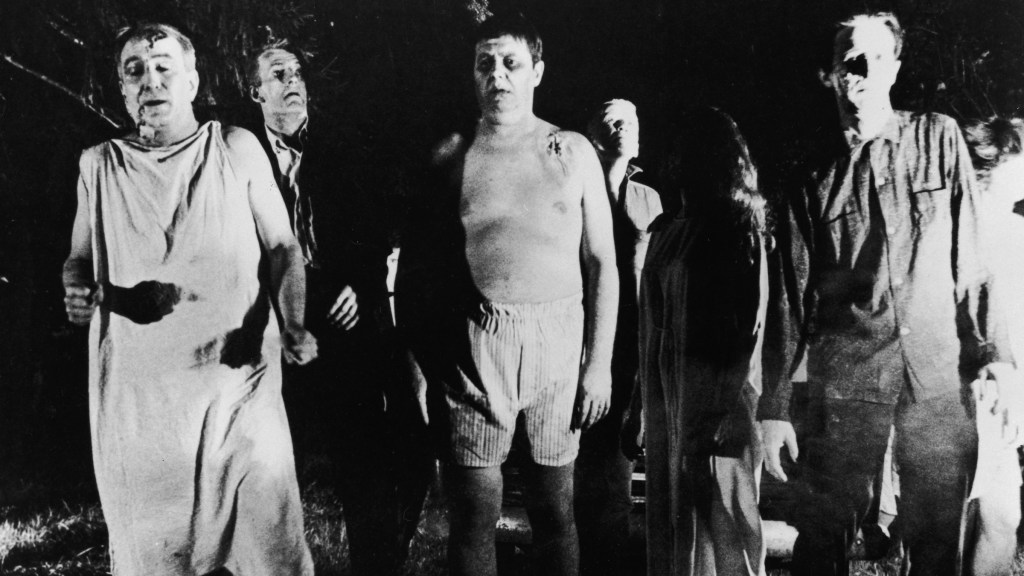
Romero’s zombies are a metaphor for death. You can easily run from them, fight them off with little effort, but eventually, they will catch up to you. Much like death itself, it’s only a matter of time. It’s an effective metaphor for those who dread their own mortality, but for others, the plodding, slow-moving corpses of Romero’s films aren’t that frightening. Running zombies, on the other hand, pose a bigger threat than their ambulatory siblings and, as a result, offer bigger scares culminating in the lightning-fast, rage-infected nightmares of 28 Days Later and its sequels.
So next time you watch a movie with fast zombies, remember, Return of the Living Dead‘s zombies ran so that the zombies in 28 Years Later … could also run? Look, it’s not a perfect metaphor, but you understand what we’re trying to say. Go stream Return of the Living Dead for free on Tubi or Pluto TV and tell the Tarman we said “Hi.”





